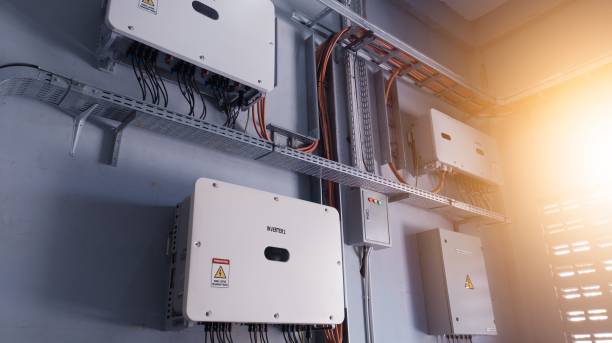
Comms Error in Solar Inverters
Solar Energy System
# In-Depth Guide: Solar Inverter Communication Error Solutions and Troubleshooting
Solar inverters are a vital component in any photovoltaic system, converting DC power from solar panels into usable AC power for your home or business. Modern inverters often include monitoring capabilities, allowing system owners or installers to track performance, monitor faults, and maximize efficiency. However, one of the most common and frustrating issues encountered is a **communication (comm) error**. This error can hinder remote monitoring, data logging, and system optimization.
In this blog post, we will explore what comm errors are, why they occur, and provide comprehensive troubleshooting steps and solutions to restore normal operation.
---
## What Is a Solar Inverter Communication Error?
A **communication error** (often displayed as “Comm Error,” “COM Error,” or “Communication Fault”) indicates the inverter is unable to successfully transmit or receive data via its communication interface—be it RS485, RS232, Ethernet, Wi-Fi, ZigBee, or other protocols.
This may affect:
- Communication with monitoring platforms (online portals, apps)
- Connectivity to data loggers or smart meters
- Integration with other devices or hybrid systems
---
## Common Causes of Communication Errors
1. **Physical Connection Issues**
- Loose, disconnected, or broken communication cables
- Improper cable terminations
- Damaged connectors or corrosion due to weather
2. **Configuration Problems**
- Incorrect inverter or device address settings (e.g., Modbus ID)
- Baud rate or parity mismatch between devices
- IP address or network configuration errors for Ethernet/Wi-Fi
3. **Device or Firmware Issues**
- Outdated firmware or software in the inverter or data logger
- Malfunctioning communication module (Wi-Fi, RS485, etc.)
- Electrical noise or interference
4. **External Factors**
- Power surges or lightning strikes affecting communication hardware
- Environmental factors (e.g., water ingress, dust)
---
## General Troubleshooting Steps
### 1. **Check Physical Connections**
- Inspect communication cables for cuts, breaks, or loose connections.
- Reseat all connectors and ensure they are properly locked in place.
- For RS485/RS232, check terminal screws; for Ethernet, check RJ45 plugs and sockets.
- Look for corrosion or water damage, especially in outdoor installations.
### 2. **Verify Power Supply**
- Ensure the inverter and all communication devices (Wi-Fi modules, data loggers) are powered on.
- Check for blown fuses or tripped breakers in the communication module’s power supply.
### 3. **Review Communication Settings**
- For **RS485/Serial connections**: Ensure all devices on the network have unique addresses. Check that baud rate, data bits, parity, and stop bits match across devices.
- For **Ethernet/Wi-Fi**: Confirm IP addresses (static or DHCP), subnet mask, and gateway settings are correct and not conflicting.
- For **Wi-Fi**: Ensure the inverter is still connected to the correct wireless network; re-enter credentials if needed.
### 4. **Test Communication Hardware**
- Swap cables with known-good replacements.
- Test communication ports on the inverter and data logger using laptops or diagnostic tools.
### 5. **Check Termination Resistors (for RS485)**
- RS485 networks require termination at both ends. Verify if 120-ohm termination resistors are present and correctly installed.
### 6. **Eliminate Interference**
- Ensure communication cables are routed away from high-voltage AC cables or sources of electrical noise.
- Use shielded cables where possible.
### 7. **Update Firmware/Software**
- Visit the inverter manufacturer’s website and update your inverter, data logger, or monitoring device firmware to the latest version.
### 8. **Restart Devices**
- Power cycle the inverter and all connected monitoring or communication devices.
### 9. **Review Error Logs**
- Use onboard displays, monitoring software, or manufacturer apps to review system logs for specific error codes or timestamps to help diagnose the problem.
---
## Specific Solutions for Popular Solar Inverter Brands
### Huawei, Growatt, GoodWe, Fronius, SMA, and Others
- **Check User Manuals:** Each brand has unique error codes and troubleshooting steps. Always refer to the official documentation.
- **Factory Reset Communication Modules:** Sometimes resetting the Wi-Fi or Ethernet module resolves persistent issues.
- **Reconfigure Communication Protocols:** For Modbus or proprietary systems, ensure the correct protocol is selected in the inverter menu.
---
## When to Call a Professional
If you are unable to resolve the communication error after following the above steps, it may indicate:
- Internal hardware failure (communication module, mainboard)
- Deep configuration or compatibility issues
- Warranty or safety considerations
**Contact a qualified solar installer or the inverter manufacturer’s technical support for advanced diagnostics.**
---
## Preventing Future Communication Errors
- Use weatherproof, UV-resistant cabling and connectors for outdoor installations.
- Schedule regular inspections of communication wiring and modules.
- Keep firmware and monitoring apps updated.
- Protect communication equipment from surges using surge protectors.
---
## Conclusion
Communication errors in solar inverters can disrupt monitoring and management but are often resolvable through systematic troubleshooting. Start with the basics—physical connections and settings—before progressing to firmware and hardware checks. If in doubt, consult a professional.
**Are you experiencing persistent inverter communication errors in Zambia? We are the best installers and troubleshooters for solar energy systems in Zambia. Contact us today for expert solutions and reliable service!**
---
